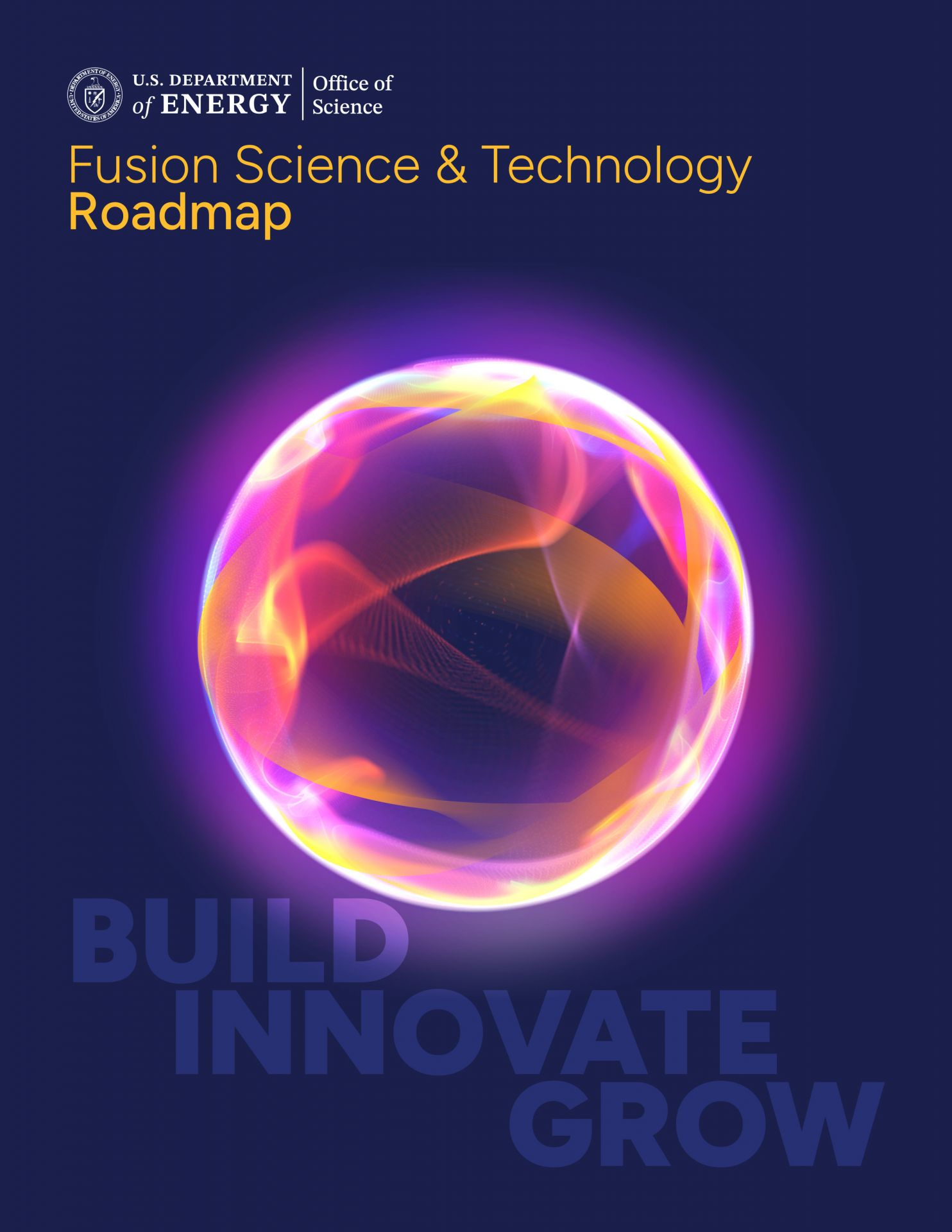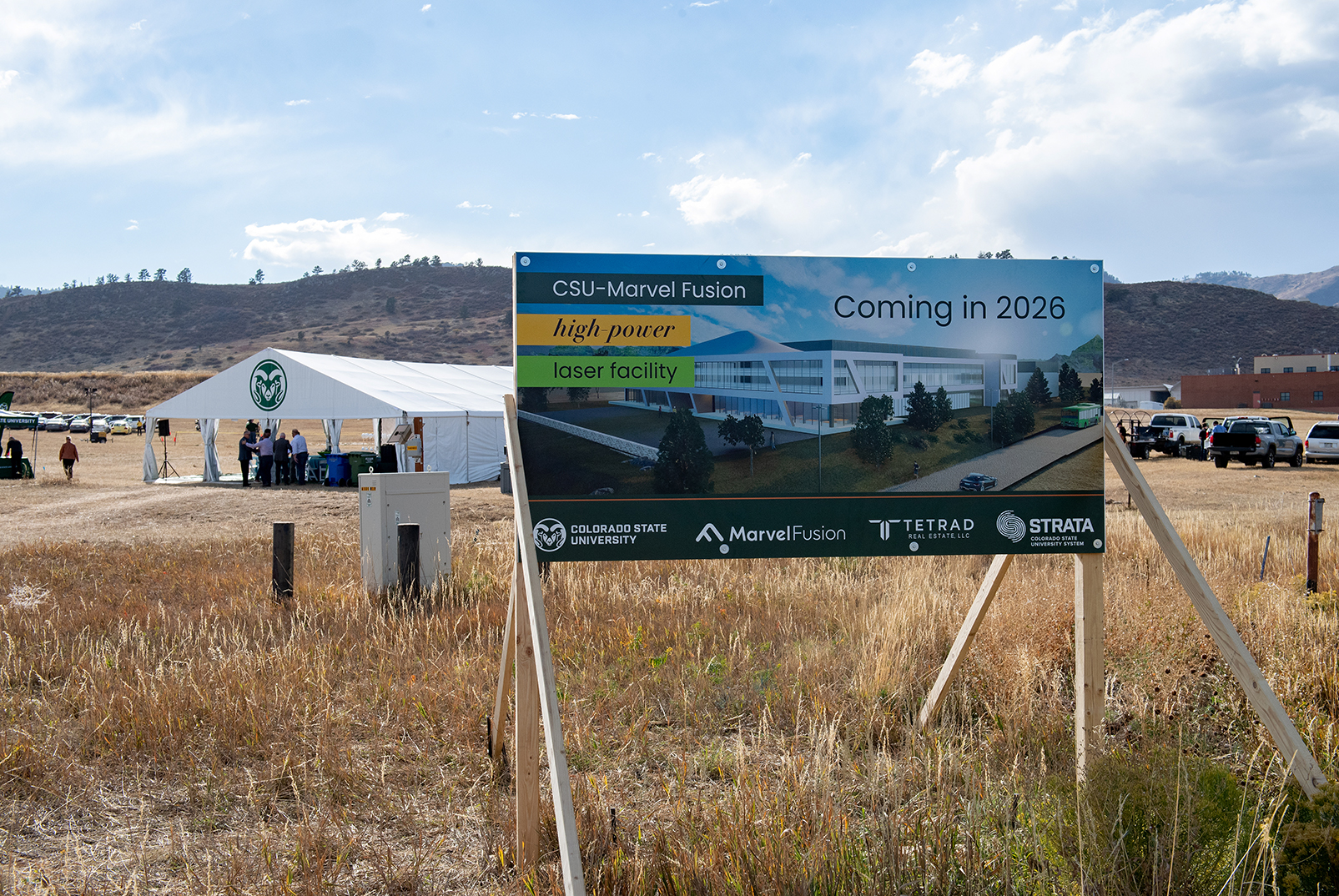Thea Energy, one of three fusion companies that have met early milestones in the design of a fusion pilot plant has opened a new headquarters facility in Kearny, N.J. (Photo: Thea Energy)
The Department of Energy announced six Fusion Innovative Research Engine (FIRE) collaboratives set to receive funding of $107 million on January 16. The six selected teams represent a first round of awards from a funding opportunity announcement released in May 2023 as part of the DOE Office of Fusion Energy Sciences’ (FES) goal of creating a “fusion innovation ecosystem.”
Colorado State University hosted a ground-breaking event for a new laser research facility being built in partnership with Marvel Fusion at the university’s Foothills Campus. (Image: CSU)
In the foothills of the Rocky Mountains on the outskirts of Fort Collins, Colo.—home to Colorado State University—work began this month on a new laser facility funded by a public-private partnership. The private portion is $150 million from Marvel Fusion, announced in August 2023, while $12.5 million—the latest funding for CSU from the Department of Energy’s Office of Fusion Energy Sciences (FES)—will support the new facility as part of LaserNetUS, a laser research network operated by DOE-FES to provide access to laser facilities for multidisciplinary researchers from the United States and abroad.
A still shot from the Senate ENR Hearing to Examine Fusion Energy Technology Development.
Hours before the Senate Committee on Environment and Natural Resources (ENR) opened a scheduled September 19 hearing on fusion energy technology development, CNN published an article titled “The US led on nuclear fusion for decades. Now China is in a position to win the race.” The article was entered into the hearing record, but senators had already gotten the message.
A slide from the DOE-FES’s recent presentation to the Fusion Energy Sciences Advisory Committee. (Image: DOE)
The Office of Fusion Energy Sciences (FES) in the Department of Energy’s Office of Science introduced a new plan—"Building Bridges: A Vision for the Office of Fusion Energy Sciences”—during a Fusion Energy Sciences Advisory Committee (FESAC) hearing on December 13, and announced that news December 14. What’s included? A plan for the DOE to “establish the steps needed to help advance fusion energy, including addressing key science and technology gaps in the supply chain and industry.” The vision is less a guiding document than a preview of DOE-FES’s near-term intentions, which include drafting a fusion science and technology road map in 2024 to shape investments for the coming decade.
STARFIRE is the name of an inertial fusion energy hub led by Lawrence Livermore National Laboratory—one of three hubs announced in early December. (Image: LLNL)
The Department of Energy recently announced that it was establishing three inertial fusion energy (IFE) hubs and funding them with a total of $42 million over four years. The leaders of the three hubs selected by competitive peer review—Colorado State University, Lawrence Livermore National Laboratory, and the University of Rochester—all issued press releases touting the attributes and plans of their facilities and their research collaborators on the same day—December 7.
Announcing the funding for commercial fusion energy development were Asmeret Asefaw Berhe (top left), director of the DOE-OS; Jennifer Granholm, secretary of energy (top right); and Arati Prabhakar (bottom), director of the White House Office of Science and Technology Policy and science advisor to the president.
From a crowded field of would-be fusioneers, the Department of Energy has selected eight companies for the public-private Milestone-Based Fusion Development Program to develop fusion pilot plant designs and resolve related scientific and technological challenges within five to 10 years. The DOE announced awards totaling $46 million for an initial 18 months of work on May 31.
Energy secretary Jennifer Granholm addresses an audience of lab staff, dignitaries, and media at LLNL. (Photo: LLNL)
Lawrence Livermore National Laboratory hosted current and former staff, government officials, and media on May 8 to celebrate the lab’s achievement of fusion ignition at the National Ignition Facility (NIF) on December 5, 2022. Energy secretary Jennifer Granholm and undersecretary for nuclear security and National Nuclear Security Administration administrator Jill Hruby were in attendance, and Granholm took the opportunity to announce funding of up to $45 million to support inertial fusion energy (IFE) research and development. The Department of Energy’s Office of Science (DOE-SC) wants to establish multiple IFE Science and Technology Innovation Hubs (IFE S&T hubs), with total funding for 2023 of up to $9 million for projects lasting up to four years in duration.
A panel on the status and benefits of fusion technology featured, from left, Kimberly Budil (moderator), of Lawrence Livermore National Laboratory; Kathy McCarthy, of Oak Ridge National Laboratory; Abdalla Darwish, of Dillard University; Anne White, of the Massachusetts Institute of Technology; Steven Cowley, of Princeton Plasma Physics Laboratory; and Mark Berry, of Southern Company.
The White House Office of Science and Technology Policy and the Department of Energy cohosted the White House Summit on Developing a Bold Decadal Vision for Commercial Fusion Energy on March 17. The livestreamed event brought together fusion leaders from government, industry, academia, and other stakeholder groups to showcase recent achievements in fusion research and discuss the administration’s strategy to support the development of commercial fusion energy. Energy Secretary Jennifer Granholm’s announcement of a new agency-wide fusion energy initiative and a funding opportunity worth $50 million for magnetic confinement fusion research made March 17 a lucky day indeed for the U.S. fusion energy community.
Invisible infrared light from the 200-trillion-watt Trident Laser at Los Alamos National Laboratory interacts with a 1-micrometer thick foil target (in the center of the photo) to generate a high-energy-density plasma. (Photo: Joseph Cowan and Kirk Flippo, LANL)
The Department of Energy’s Office of Science (DOE-SC) and the National Nuclear Security Administration (NNSA) on July 27 announced $9.35 million for 21 research projects in high-energy-density laboratory plasmas. High-energy-density (HED) plasma research, originally developed to support the U.S. nuclear weapons program, has applications in astrophysics, fusion power plant development, medicine, nuclear and particle physics, and radioisotope production.
The Max Planck Institute for Plasma Physics offers an interactive and informative 360-degree panoramic tour of Wendelstein 7-X. (Source: ipp.mpg.de)
U.S. scientists are getting funding to carry out seven research projects at two major stellarator fusion energy facilities located in Germany and Japan, the Department of Energy announced on June 8. A total of $6.4 million has been allocated for seven research projects with terms of up to three years.
 The Department of Energy introduced a Fusion Science & Technology (S&T) Roadmap on October 16 as a national “Build–Innovate–Grow” strategy to develop and commercialize fusion energy by the mid-2030s by aligning public investment and private innovation. Hailed by Darío Gil, the DOE’s new undersecretary for science, as bringing “unprecedented coordination across America's fusion enterprise” and advancing President Trump’s January 2025 executive order, “Unleashing American Energy,” the road map echoes plans issued by the DOE’s Office of Fusion Energy Sciences (FES) in 2023 and 2024, with a new emphasis on the convergence of AI and fusion.
The Department of Energy introduced a Fusion Science & Technology (S&T) Roadmap on October 16 as a national “Build–Innovate–Grow” strategy to develop and commercialize fusion energy by the mid-2030s by aligning public investment and private innovation. Hailed by Darío Gil, the DOE’s new undersecretary for science, as bringing “unprecedented coordination across America's fusion enterprise” and advancing President Trump’s January 2025 executive order, “Unleashing American Energy,” the road map echoes plans issued by the DOE’s Office of Fusion Energy Sciences (FES) in 2023 and 2024, with a new emphasis on the convergence of AI and fusion.

 The Department of Energy announced on Wednesday that it has awarded $134 million in funding for two programs designed to secure U.S. leadership in emerging fusion technologies and innovation. The funding was awarded through the DOE’s Fusion Energy Sciences (FES) program in the Office of Science and will support the next round of Fusion Innovation Research Engine (FIRE) collaboratives and the Innovation Network for Fusion Energy (INFUSE) awards.
The Department of Energy announced on Wednesday that it has awarded $134 million in funding for two programs designed to secure U.S. leadership in emerging fusion technologies and innovation. The funding was awarded through the DOE’s Fusion Energy Sciences (FES) program in the Office of Science and will support the next round of Fusion Innovation Research Engine (FIRE) collaboratives and the Innovation Network for Fusion Energy (INFUSE) awards.











 The Fusion Energy Science Advisory Committee (FESAC), which is responsible for advising the Department of Energy’s Office of Science, on December 4 published the first public draft of
The Fusion Energy Science Advisory Committee (FESAC), which is responsible for advising the Department of Energy’s Office of Science, on December 4 published the first public draft of